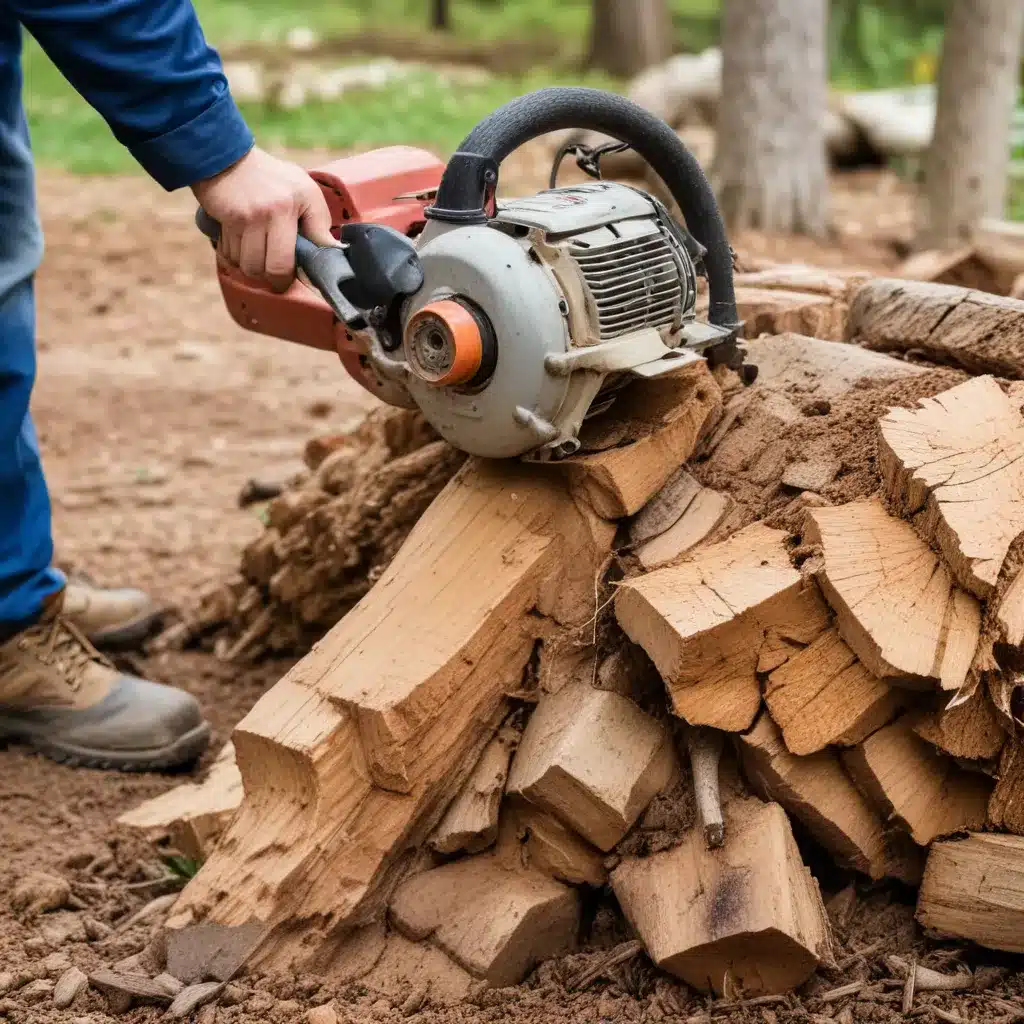
The removal of tree stumps can be a complex and multifaceted process, requiring specialized knowledge and equipment. As a tree care specialist at TriCounty Tree Care, I am excited to share my insights on the various techniques and considerations involved in effective stump grinding. From mechanical methods to chemical treatments, and the implications for the environment, this article will delve into the stump removal ontology to help homeowners and landscapers navigate this often-overlooked aspect of arboricultural maintenance.
Stump Removal Techniques
When it comes to the elimination of unsightly and potentially hazardous tree stumps, there are several approaches to consider. The most common methods include mechanical stump grinding, chemical stump removal, and the manual extraction of stumps.
Mechanical Stump Grinding
Stump grinding is a widely-used technique that employs specialized machinery to reduce the stump to a fine mulch. This process involves the use of a stump grinder, a powerful machine equipped with a rotating cutting disk or wheel that grinds the stump into small wood chips. The depth and width of the grinding can be tailored to the size of the stump, ensuring a thorough and efficient removal.
Chemical Stump Removal
An alternative to mechanical grinding is the use of chemical stump removal products. These typically contain active ingredients, such as potassium nitrate or sodium hydroxide, that accelerate the decomposition of the stump. By applying the chemical solution directly to the stump, the wood fibers are gradually broken down, allowing the stump to be more easily removed over time.
Manually Extracting Stumps
In some cases, the physical extraction of a stump may be the most appropriate method. This labor-intensive process involves digging around the stump, severing the roots, and then manually pulling or prying the stump out of the ground. While this approach can be effective for smaller stumps, it is generally more time-consuming and physically demanding than mechanical or chemical methods.
Optimizing Stump Grinding Efficiency
To ensure the most efficient and effective stump removal, several factors must be considered, including the choice of equipment, site preparation, and the operator’s techniques.
Equipment Considerations
The selection of the appropriate stump grinder is crucial. Factors such as the power output, blade size, and maneuverability of the machine can significantly impact the speed and quality of the grinding process. Larger stumps may require more powerful equipment, while smaller stumps can often be handled with more compact, maneuverable models.
Site Preparation
Proper site preparation is key to maximizing the efficiency of stump grinding. This may involve clearing the area around the stump of any debris, rocks, or other obstacles that could interfere with the grinder’s operation. Additionally, ensuring the ground is level and stable can help prevent the grinder from becoming stuck or bogged down during the process.
Operator Techniques
The skill and experience of the stump grinding operator play a significant role in the overall efficiency of the process. Techniques such as maintaining a consistent grinding pattern, adjusting the depth and angle of the blade, and efficiently maneuvering the machine can all contribute to a more streamlined and thorough removal of the stump.
Environmental Impact of Stump Removal
The removal of tree stumps can have various environmental implications that should be considered, including soil disturbance, waste disposal, and the potential impact on the local ecosystem.
Soil Disturbance
The process of stump removal, whether through grinding or extraction, can lead to significant soil disturbance. This can disrupt the delicate balance of the soil structure, potentially affecting the growth and health of surrounding vegetation.
Waste Disposal
The byproducts of stump removal, such as wood chips or decomposed material, must be properly disposed of or repurposed. Improper handling of this waste can lead to environmental concerns, such as the potential for soil contamination or the release of harmful chemicals.
Ecological Implications
The removal of a tree stump can also have broader ecological implications, as the stump itself may have provided habitat or resources for various organisms, such as fungi, insects, or small mammals. Careful consideration of the local ecosystem and the potential impact of stump removal is essential to maintaining a healthy and balanced landscape.
Stump Removal Safety and Regulations
When it comes to the removal of tree stumps, it is crucial to prioritize safety and adhere to relevant regulations and guidelines.
Personal Protective Equipment
Stump grinding and removal can be hazardous activities, requiring the use of appropriate personal protective equipment (PPE). This may include safety goggles, gloves, sturdy footwear, and hearing protection to mitigate the risks associated with flying debris, vibrations, and noise.
Local Ordinances
Many municipalities and local authorities have specific regulations regarding the removal of tree stumps, including permit requirements, disposal guidelines, and restrictions on the use of certain methods. It is essential to research and comply with these local ordinances to ensure the safe and lawful execution of stump removal projects.
Disposal Guidelines
The proper disposal of stump removal waste, such as wood chips or decomposed material, is crucial to minimize environmental impact. Consulting with local authorities or waste management services can help ensure that the byproducts of stump removal are handled in an eco-friendly and compliant manner.
In conclusion, the efficient and responsible removal of tree stumps requires a comprehensive understanding of the various techniques, considerations, and environmental implications involved. By leveraging the expertise of professional tree care specialists at TriCounty Tree Care, homeowners and landscapers can navigate the complexities of stump removal with confidence, ensuring a safe, sustainable, and visually appealing outcome for their properties. For more information or to schedule a consultation, please visit TriCounty Tree Care.


